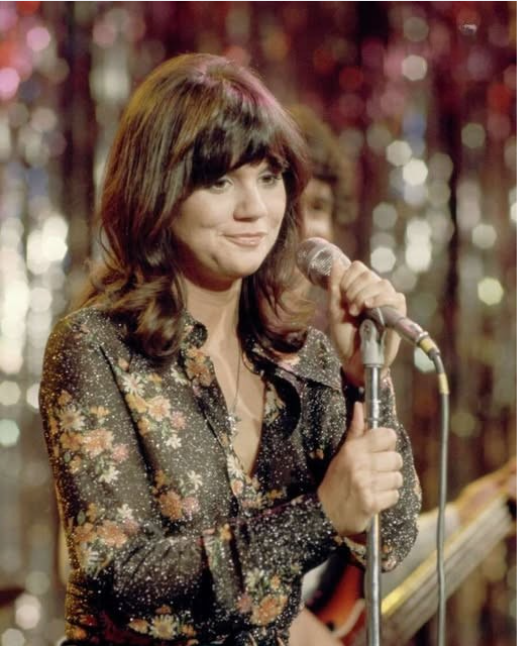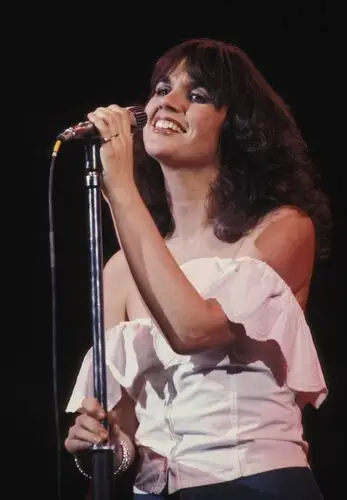By any measure, Linda Ronstadt was a powerhouse. She was the best-selling female rock star of the 1970s, with a string of platinum records, sold-out arenas, and a voice that could whisper like a lullaby or roar like thunder. But even at the height of her fame, Ronstadt pushed back against the labels that tried to define her. Being called “the Queen of Rock” wasn’t offensive—but it wasn’t accurate either. It was simply too small a crown for someone who refused to stay in one lane.

Ronstadt wasn’t just a musician. She was a shape-shifter. Raised in a Mexican-American household in Tucson, Arizona, she grew up surrounded by a wide spectrum of sound—ranchera ballads, Broadway show tunes, big band jazz, and American pop. Her father introduced her to opera; her siblings sang harmonies with her in the living room. That diversity became her artistic foundation. She didn’t just learn different genres—she embodied them.
When she arrived on the Los Angeles music scene in the late 1960s, the industry tried to make her into something digestible: a pretty girl with a powerful voice fronting a country-rock band. But Ronstadt had no intention of becoming a musical cliché. While her early hits—like You’re No Good and When Will I Be Loved—catapulted her to stardom, she soon began exploring territory that baffled critics and thrilled fans.

She took on operettas. She sang jazz standards arranged by the legendary Nelson Riddle. She returned to her cultural roots with an album of traditional Mexican music, Canciones de Mi Padre, which became the best-selling non-English language album in American history. She recorded albums of lullabies and pop standards, collaborated with country icons like Dolly Parton and Emmylou Harris, and even performed Gilbert and Sullivan.
Each time she strayed from the expected, the media questioned her choices. But each time, she proved them wrong—not with words, but with sold-out shows, critical acclaim, and loyal fans who followed her wherever her voice went.
More than a performer, Ronstadt was a strategist. She managed her own career long before it was common for women to do so in the male-dominated music industry. She wore cutoffs and high boots on stage, but offstage, she negotiated contracts, rejected exploitative offers, and stayed far from the celebrity circus. She turned down marriage proposals. She dismissed tabloid rumors. She even declined Mick Jagger’s invitation to tour with the Rolling Stones—not because she wasn’t flattered, but because it didn’t align with her vision.

Then, in 2013, the music stopped. Ronstadt announced she could no longer sing due to Parkinson’s disease. It was a shocking end to one of the most versatile voices of the 20th century. But true to form, Ronstadt didn’t crumble. She faced the diagnosis with clarity and grace. “I can’t sing a note,” she said matter-of-factly. And then she moved forward.
In her post-performance life, Ronstadt published a memoir, Simple Dreams, that was praised for its honesty and lack of ego. She became a vocal advocate for immigrant rights, particularly Mexican-American culture and identity. She continued to give interviews, not as a fading star, but as a grounded woman with something to say.
What makes Linda Ronstadt extraordinary is not just her talent—it’s her refusal to be boxed in. She didn’t need to conform to what a “female rock star” was supposed to be. She proved that you can sing soft and still be strong, that you can change genres and still be authentic, that you can grow older and still matter.

Was she rock? Yes. Was she country? Absolutely. Was she opera, jazz, and Mexican folk? She was all of it—and something more. She was herself.
In doing so, Ronstadt made space for the women who came after her—women like Kacey Musgraves, Brandi Carlile, and even Beyoncé, who now genre-hop without apology. Ronstadt burned down the boxes before most people realized they were there.
As we look back on her legacy, one question lingers: What box would you have put her in—if she hadn’t burned them all down first?